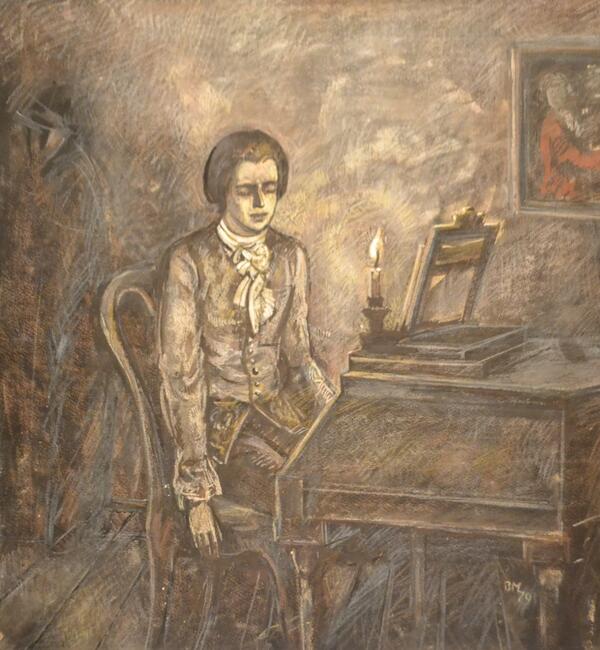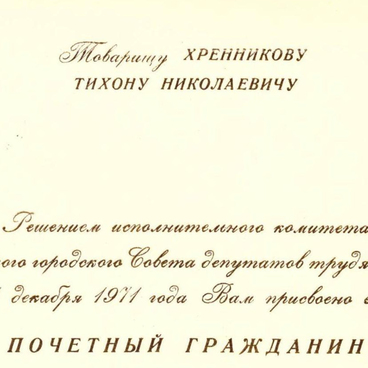The artist Vladimir Minaev (1912–1993) lived and worked in Moscow. He studied at the Moscow State Art Institute. His teachers were artist Konstantin Istomin, graphic artist and book illustrator Pavel Pavlinov, and portrait painter and cartoonist Nikolay Radlov. In February 1942, Minaev went off to war, for the frontline duty, where he worked as an artist and journalist for military newspapers.
Minaev’s first post-war works were illustrations for children’s fairy tales. During this period, the artist formed a unique style that gained full strength in the 1960s-1970s. In the drawings of this time, features of heightened drama, expression and romantic elation were manifested.
In 1967, Minaev created illustrations for Nikolay Ostrovsky’s novel “How the Steel Was Tempered” — these works put him in the forefront of Soviet illustrators.
The main features of Minaev’s work are a conventional drawing with a clear black outline, white highlights and distinct tonal contrasts. He painted ‘Young Mozart Portrait’ in 1979. The artist depicted an Austrian composer sitting at an instrument in a semi-illuminated room.
Wolfgang Amadeus Mozart was born in 1756 in Salzburg. His family noticed the boy’s musical talent at an early age — from childhood he played the organ, violin and harpsichord, and by the age of 17 the composer had created more than 40 works. Mozart became the youngest member of the Bologna Philharmonic Academy in history. It is known that the composer’s family did not live well, so the composer often worked by the light of one candle. To create the candlelight effect, Minaev used a mixed technique — pastel and tempera.
The figure of Mozart was important for Khrennikov: he said that one of the first books he read as a child was a biography of an Austrian musician. Then he pledged that he would also become a composer, and he met his pledge. In 2003, Khrennikov received the Mozart Medal, a prestigious award from UNESCO, which is given for a contribution to the development of world culture.
Khrennikov especially appreciated this painting, and in June 2000 donated the work to the collection of the house-museum.
Minaev’s first post-war works were illustrations for children’s fairy tales. During this period, the artist formed a unique style that gained full strength in the 1960s-1970s. In the drawings of this time, features of heightened drama, expression and romantic elation were manifested.
In 1967, Minaev created illustrations for Nikolay Ostrovsky’s novel “How the Steel Was Tempered” — these works put him in the forefront of Soviet illustrators.
The main features of Minaev’s work are a conventional drawing with a clear black outline, white highlights and distinct tonal contrasts. He painted ‘Young Mozart Portrait’ in 1979. The artist depicted an Austrian composer sitting at an instrument in a semi-illuminated room.
Wolfgang Amadeus Mozart was born in 1756 in Salzburg. His family noticed the boy’s musical talent at an early age — from childhood he played the organ, violin and harpsichord, and by the age of 17 the composer had created more than 40 works. Mozart became the youngest member of the Bologna Philharmonic Academy in history. It is known that the composer’s family did not live well, so the composer often worked by the light of one candle. To create the candlelight effect, Minaev used a mixed technique — pastel and tempera.
The figure of Mozart was important for Khrennikov: he said that one of the first books he read as a child was a biography of an Austrian musician. Then he pledged that he would also become a composer, and he met his pledge. In 2003, Khrennikov received the Mozart Medal, a prestigious award from UNESCO, which is given for a contribution to the development of world culture.
Khrennikov especially appreciated this painting, and in June 2000 donated the work to the collection of the house-museum.



